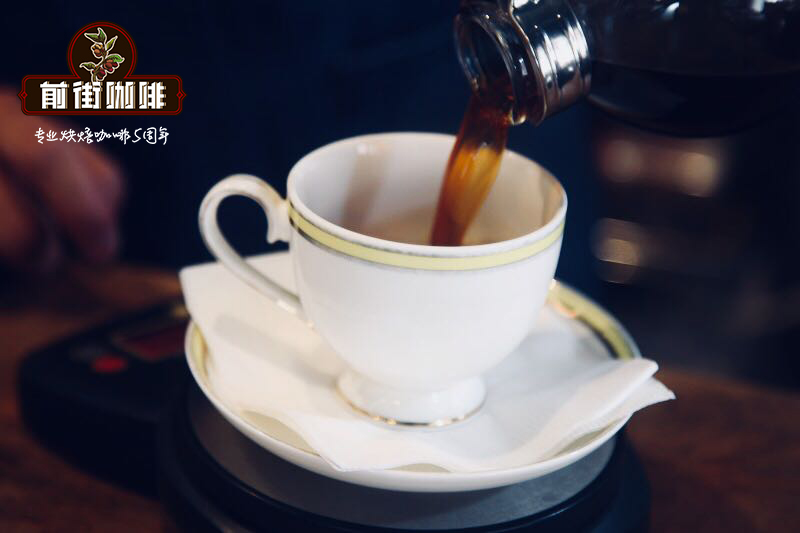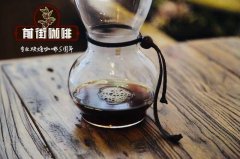What is the red wine treatment of Panamanian Hartman coffee? What is the anaerobic fermentation of coffee?

Professional coffee knowledge exchange more coffee bean information please follow the coffee workshop (Wechat official account cafe_style)
The treatment of red wine has once become a hot discussion in the industry. In the process of coffee fruit to raw coffee bean treatment, there will be more or less "fermentation", whether it is washing treatment, honey treatment, or sun treatment will undergo this chemical change process. Different substances involved in fermentation (coffee peel, coffee pulp, coffee pectin, bacteria species, bacteria distribution), different fermentation environment (water and water, oxygen and oxygen, PH environment, etc.), different drying process (container material, natural sun, drying device, turning times, etc.), resulting in different post-treatment flavor and taste.
Coffee treatment red wine treatment (also known as carbon dioxide treatment)
It can also be called red wine treatment, which is inspired by the brewing technology of red wine. At present, only eight estates in Colombia have successfully introduced coffee beans treated with this method to the market. According to the data of these eight estates, we can roughly divide the types of red wine treatment into: acetic acid fermentation (Aerobic aerobic fermentation), lactic acid fermentation (Anaerobuic anaerobic fermentation), mixed fermentation (Mix Fermentation=Aerobic+Anaerobuic).
The traditional treatment method is difficult to control the changeable fermentation degree of coffee beans. But red wine treatment rules can ensure the quality of coffee beans by controlling PH value, even temperature and humidity, and airtight fermentation makes aroma less volatile.
Carbon dioxide impregnation is a new treatment method used in red wine treatment, in which the whole grape is put into carbon dioxide gas to make it oxygen-free. In this way, even in the absence of yeast, the grape fruit itself will convert its own sugar into alcohol, thus bringing a special aroma, the wine produced by this method has soft aroma, rich taste and stable color.
The first carbon dioxide impregnation method to enter our eyes should be in 2015 Sasa Sestic with a carbon dioxide impregnation method of washing beans won the world championship.
So what is the difference between this treatment and ordinary sun, water washing and honey treatment?
Carbon dioxide impregnation is a new treatment method used in red wine treatment, in which the whole grape is put into carbon dioxide gas to make it oxygen-free. In this way, even in the absence of yeast, the grape fruit itself will convert its own sugar into alcohol, thus bringing a special aroma, the wine produced by this method has soft aroma, rich taste and stable color.
So how do you apply it to coffee?
1) remove the pulp and peel of the coffee beans and put them in a stainless steel container-why choose a stainless steel container? Sasa said that stainless steel containers can guarantee a cleaner flavor. Then different temperatures are controlled to affect the speed of the reaction.
2) put the stainless steel container in a room where it is easier to control the temperature, and they found that if you need more complex acid in the beans, the temperature should be controlled at 4-8 °C, and if the beans are needed to have higher sweetness, the temperature should be controlled to 18-20 °C.
3) seal the fermentation barrel so that more aromas can be developed.
4) this is the most critical and important step. Add carbon dioxide to the fermentation bucket, which is denser than oxygen, thus squeezing out the air. This puts the coffee beans in an oxygen-free environment, because there is no oxygen, which slows down the decomposition of sugars in the pectin, while the pH value decreases at a slower rate.
With the help of carbon dioxide, the whole fermentation process will be extended by 3 days at 22 °C, and the fermentation time can be longer if the temperature is lower. Reduces the dry taste and acetic acid taste. In the whole fermentation process, Sasa and Tim record these pH values, fermentation temperature and carbon dioxide at any time, in order to modify and replicate in the future.
Panamanian Hartman of the front street coffee is treated in this way. Red wine treatment makes this bean with a strong flavor of fermented wine, which is amazing!
The recommended parameters of the front street hand flush:
V60ap90 ℃ / 1 15 / time two minutes
Flavor: grapefruit, low acid, strong fermented wine
Important Notice :
前街咖啡 FrontStreet Coffee has moved to new addredd:
FrontStreet Coffee Address: 315,Donghua East Road,GuangZhou
Tel:020 38364473
- Prev

How to treat coffee and wine? What is the way coffee is handled with raw beans? Principle of anaerobic fermentation of coffee
Professional coffee knowledge exchange more information about coffee beans Please follow the coffee workshop (Wechat official account cafe_style) in recent years, as coffee has become more and more popular, we have also witnessed changes in the way coffee is treated. From the beginning of water washing, sun exposure, to honey treatment, wet planing, to the red wine treatment, carbon dioxide impregnation, which is very popular in recent years. [
- Next

Extraction and application of hand-made study course to find the appropriate extraction ratio.
It has been said in the book or by the teacher that the factors that affect the extraction are probably the amount of powder, the thickness of grinding, the temperature of the water and the large flow of water.
Related
- What is the meaning of lactic acid fermentation with coffee bean treatment?
- How to judge the state of foam by sound?
- How does the latte pull out the unicorn pattern? Come to get for a little trick to improve the flower pull!
- Will flower pulling affect the taste of the latte?
- Do you know the history of coffee?
- The difference between honey treatment and sun washing what is raisin honey treatment?
- What kind of milk can a novice use to make coffee foam to keep the foam longer? The correct method and skills of milking tutorial sharing
- Why do washed coffee beans taste sour? Flavor characteristics of washed Coffee
- Introduction to the skill of how to practice the size and height of water injection around the circle of hand-brewed coffee
- How do beginners practice coffee flower drawing from scratch?

